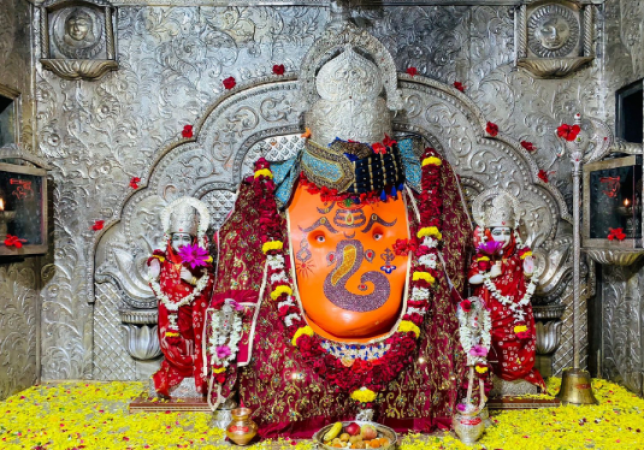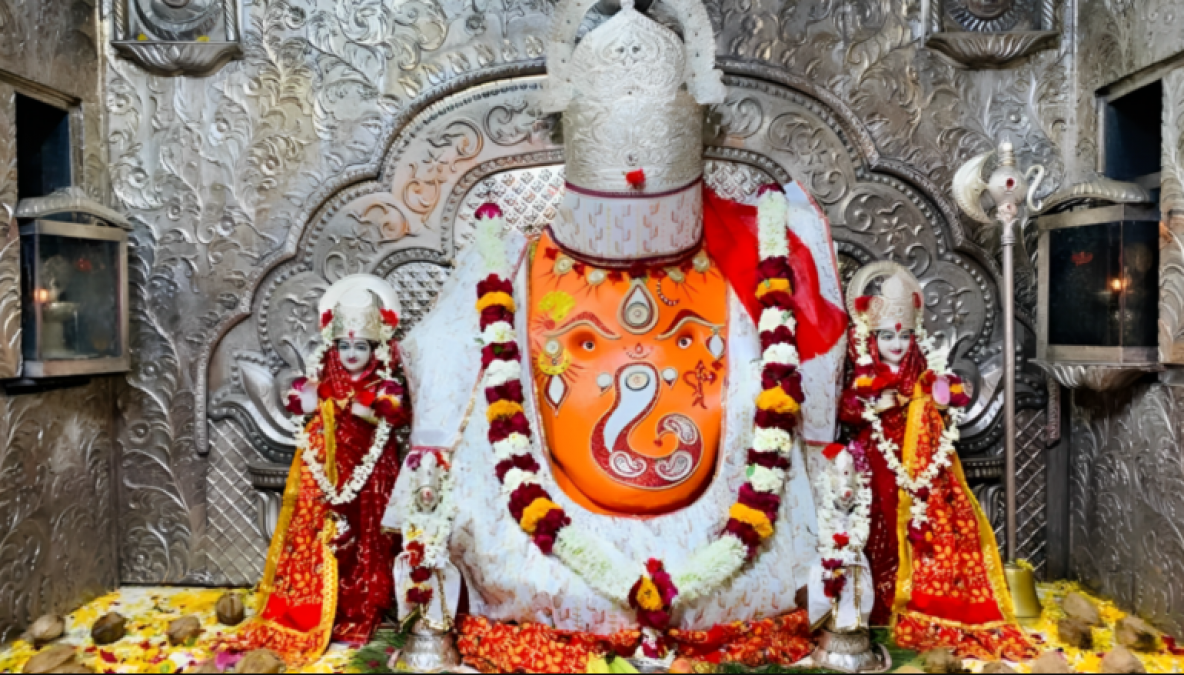
Khajrana Temple, located in the vibrant city of Indore, India, is an ancient Hindu temple dedicated to Lord Ganesha. It holds immense religious and historical significance and attracts devotees from all walks of life. This article explores the fascinating history of Khajrana Temple and provides insights into the rituals and practices followed by worshippers.
History of Khajrana Temple:
The origins of the Khajrana Temple can be traced back to the 18th century during the reign of the Holkar dynasty. Legend has it that Rani Ahilyabai Holkar, the revered queen of Indore, had a divine vision where Lord Ganesha directed her to install his idol at the present site. Following this celestial encounter, she oversaw the construction of the temple, which has since become a symbol of faith and devotion.
The temple's name, Khajrana, is derived from the word "khajoor" (date palm), as the area was once abundant with these trees. Over the years, the temple has undergone several renovations and expansions, transforming it into a magnificent architectural masterpiece. Devotees believe that Lord Ganesha bestows blessings and fulfills their desires when worshipped with devotion and sincerity.
Architecture and Design:
Khajrana Temple boasts an exquisite architectural style that blends traditional Maratha and Rajput influences. The temple features a stunning entrance adorned with intricate carvings and sculptures, inviting visitors into a realm of divinity. The central shrine houses the idol of Lord Ganesha, sculpted from a single block of black stone. The deity is depicted in a seated position with four arms, representing various aspects of his divine power.
The inner sanctum of the temple is adorned with vibrant colors, decorative motifs, and paintings depicting scenes from Hindu mythology. The ambiance is further enhanced by the melodious chants and the fragrance of incense, creating an atmosphere of tranquility and spirituality.
Rituals and Worship:
Devotees visiting Khajrana Temple partake in various rituals and worship practices to seek the blessings of Lord Ganesha. The temple follows a systematic and structured approach to ensure a fulfilling worship experience. Here are some of the essential rituals and practices followed at the temple:
Prarthana and Aarti: The day at Khajrana Temple commences with the morning prayer or Prarthana, where devotees offer their heartfelt prayers and seek the Lord's blessings. The temple conducts aarti (a ritual of waving lit oil lamps) twice a day, during sunrise and sunset, accompanied by devotional songs and hymns.

Prasad Offering: Devotees offer prasad (a sacred food offering) to Lord Ganesha as a gesture of gratitude and devotion. Modak, a sweet dumpling considered Lord Ganesha's favorite, is a popular prasad offered at the temple.
Special Festivals: Khajrana Temple is known for its grand celebration of Ganesh Chaturthi, a festival dedicated to Lord Ganesha. During this time, the temple witnesses a significant influx of devotees who participate in various rituals, processions, and cultural events.
Vedic Chants and Mantras: Priests at Khajrana Temple recite ancient Vedic chants and mantras to invoke the blessings of Lord Ganesha. Devotees often participate in these recitations, fostering a deep spiritual connection.
Visiting Khajrana Temple:
If you are planning a visit to Khajrana Temple, here are some guidelines to ensure a fulfilling experience:
Dress Code: It is advisable to dress modestly and respectfully when visiting the temple. Avoid wearing revealing or inappropriate clothing.
Offering and Donation: Devotees can offer flowers, coconuts, sweets, and other symbolic items to Lord Ganesha. The temple also accepts donations, which are utilized for the maintenance and welfare of the temple complex.
Silence and Devotion: Maintain a calm and respectful demeanor within the temple premises. Avoid unnecessary chatter and maintain silence during prayers and rituals.
Photography and Mobile Phones: Photography and the use of mobile phones are generally restricted inside the temple. Respect the guidelines and seek permission if you wish to capture any moments.
Khajrana Temple in Indore stands as a testament to the rich history and religious fervor of the region. Its captivating architecture, serene atmosphere, and deep-rooted spiritual practices make it a significant pilgrimage site for devotees of Lord Ganesha. The temple continues to inspire millions with its divine aura, offering solace and blessings to those who seek them. A visit to Khajrana Temple is not just a religious journey but also an exploration of the cultural heritage of Indore and the spiritual traditions of India.
Know about the roots of the ancient religion of India
Gomateshwara Temple: Monolithic Statues
The Significance of Bells in Temples: Unveiling Their Musical Charm